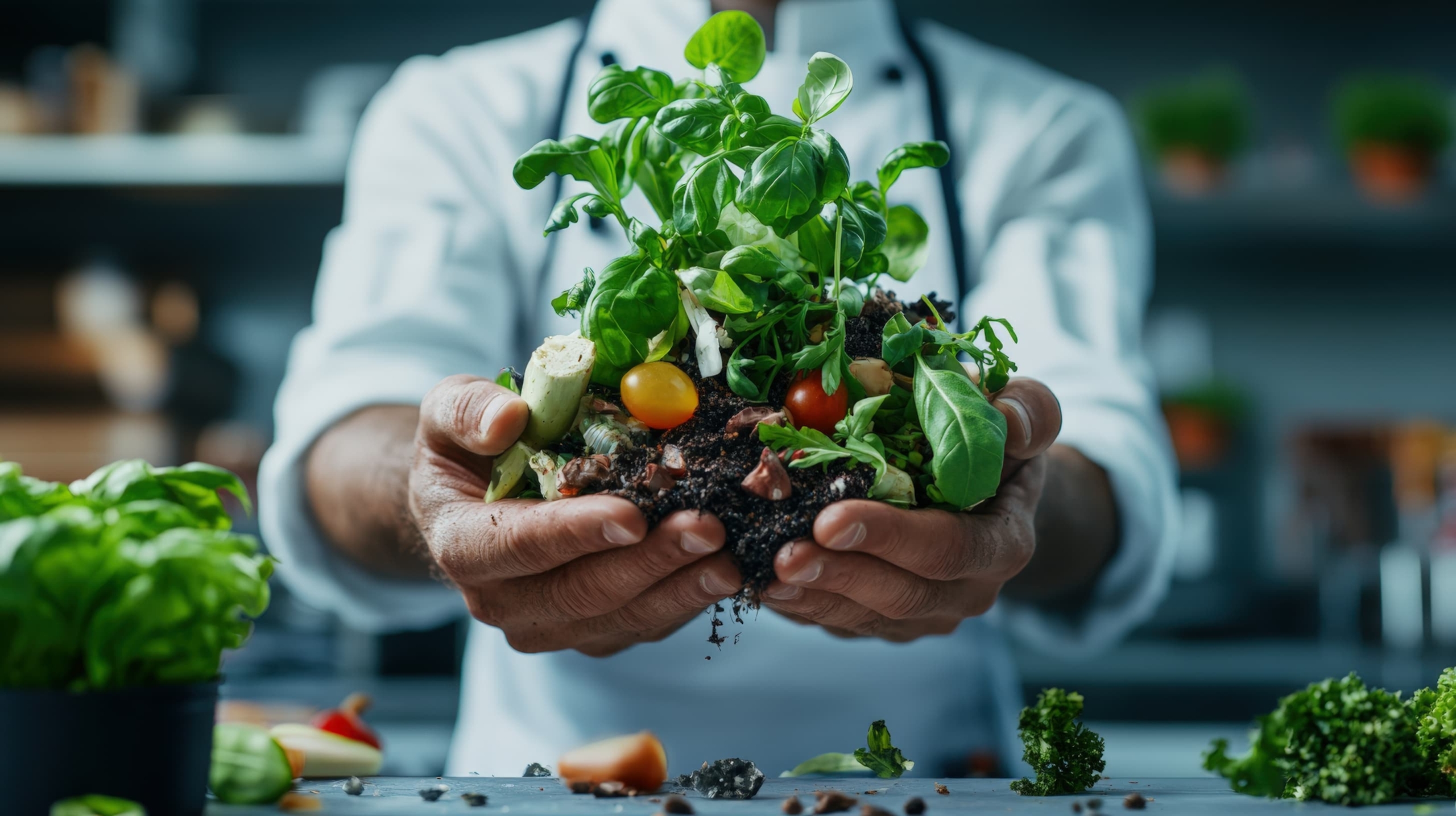
From Waste to Wealth: How to Upcycle and Monetize Your Food Service Waste Stream
07/24/2025
In the modern food service industry, sustainability is no longer a luxury or a buzzword—it’s a defining business strategy. According to the United Nations Environment Programme, globally, we waste approximately one-third of all food produced each year, amounting to about 1.3 billion tons (UNEP Report). Chefs, restaurateurs, and food service operators are increasingly recognizing the untapped potential that lies hidden in their daily operations: the food waste stream. What was once mindlessly discarded can now become a valuable resource, offering both environmental benefits and financial returns.
The Untapped Goldmine in Your Kitchen
Every day, kitchens generate mountains of scraps—trimmings, peels, skins, and overripe produce. The U.S. Department of Agriculture estimates that 30-40% of the food supply is wasted (USDA Food Waste FAQs). Traditionally, these remnants were treated as inevitable waste. But with the growing consumer demand for sustainability, transparency, and creative culinary experiences, there’s a unique opportunity to transform these scraps into profitable products and memorable menu items.
Upcycling food waste is more than just reducing what goes into the landfill. It’s about reimagining what’s possible, creating new revenue streams, enhancing your brand story, and engaging a customer base that values ethical and innovative dining experiences.
Let’s explore some practical and profitable ways to turn your kitchen waste into culinary wealth.
Tomato Scraps Turned Tomato Jam
Tomatoes are a staple ingredient in numerous dishes, ranging from salads to sauces and burgers. With every tomato prepped, there’s a consistent accumulation of cores, skins, and the occasional overripe piece. Instead of discarding these flavorful remnants, they can be transformed into a rich, versatile tomato jam.
The Process:
Gather your tomato trimmings at the end of each prep shift. Simmer them in a mixture of sugar, vinegar, and spices such as garlic, chili flakes, or a hint of smoked paprika. The result is a sweet-savory condiment that carries the essence of sun-ripened tomatoes with layers of complexity.
Menu Applications:
- Serve it as a signature burger condiment, offering customers a unique twist that sparks conversation and engagement.
- Pair it with charcuterie and cheese boards to add a house-made element that elevates the dining experience.
- Package it in small jars for retail, branded with your restaurant’s logo, to create an additional revenue stream and extend your brand beyond the dining room.
By highlighting that this jam is made from upcycled kitchen scraps, you not only demonstrate sustainability but also create a narrative that resonates with eco-conscious diners.
Banana Peels as Streusel Topping
Bananas are a ubiquitous ingredient in smoothie bars, bakeries, and dessert preparation stations. While the sweet flesh is prized, the peels often end up discarded in vast quantities. However, when banana peels are correctly cleaned, dried, and processed, they can become a surprising and delicious addition to your baked goods.
The Process:
Wash the peels thoroughly to remove any residues. Dry them completely, then grind into a coarse powder. This banana peel powder can be incorporated into streusel toppings for muffins, breads, and parfaits, lending a subtle malty, caramel-like note with an unexpected depth of flavor.
Marketing Magic:
- Brand your creations with terms like “zero-waste streusel” or “upcycled banana topping” to turn waste reduction into a compelling marketing story.
- Educate your customers about your sustainability practices through signage, menus, or digital content.
- Use your banana-based products as part of sustainability-themed events or limited-time offerings to generate buzz and media attention.
In today’s food culture, transparency and story matter. According to Nielsen, 73% of global consumers say they would definitely or probably change their consumption habits to reduce their environmental impact (Nielsen Sustainability Report). Customers appreciate knowing the origin of their food and the creative, thoughtful practices that go into it.
Citrus Zest as a Signature Seasoning
In the beverage and culinary world, citrus fruits are squeezed by the gallon. Lemon, lime, and orange juices flow freely in everything from cocktails to marinades, but their zests—packed with aromatic oils and intense flavor—often go unused.
The Process:
Before juicing, zest your citrus fruits. Dehydrate the zest thoroughly to preserve its potency, then blend with complementary ingredients such as sea salt, rosemary, thyme, or chili flakes to create custom seasoning blends.
Applications:
- Sprinkle the seasoning on roasted vegetables, seafood, or poultry to add vibrant, aromatic notes.
- Use it as a rimming salt for craft cocktails, enhancing both presentation and taste.
- Package and sell your signature seasoning as a branded retail product, perfect for gift baskets, online sales, or farmers’ markets.
Creating these seasoning blends not only maximizes your produce investment but also opens doors to retail opportunities and brand extension.
Beyond the Kitchen: Expanding the Revenue Potential
Upcycling food waste isn’t limited to just adding new items to your menu. The practice can unlock a variety of broader business opportunities, including:
- Retail Product Lines:
House-made jams, pickles, seasoning blends, and baked goods can be packaged for sale both onsite and through local retailers. These products extend your brand into your customers’ homes and serve as great souvenirs or gifts. - Cooking Classes and Workshops:
Offer classes that teach customers how to reduce waste in their kitchens. Demonstrating how to make tomato jam or banana streusel at home reinforces your expertise, strengthens customer loyalty, and creates an additional revenue stream. - Collaborations with Local Producers:
Partner with local farms, breweries, or distilleries to create collaborative upcycled products. For example, spent grains from breweries can be used in baked goods, or coffee grounds can be transformed into body scrubs for retail sale. - Media and PR Exposure:
Sustainability and zero-waste practices are hot topics. By publicizing your efforts, you can attract favorable media coverage, enhance your social media presence, and establish your brand as a leader in the industry.
The Business Case for Upcycling
From an operational standpoint, upcycling makes smart business sense:
- Cost Reduction: You lower your waste disposal costs and maximize the full value of your purchased ingredients.
- New Revenue Streams: Retail sales, workshops, and partnerships open new financial avenues.
- Customer Loyalty: Sustainability efforts build deeper connections with customers who prioritize ethical and environmentally responsible businesses.
- Brand Differentiation: As competition in the food service industry intensifies, unique and meaningful stories set you apart.
A study by First Insight and the Baker Retailing Center at the Wharton School found that 62% of Gen Z prefer to buy from sustainable brands (First Insight Study). Demonstrating a commitment to reducing food waste can increase customer loyalty and even justify premium pricing.
Overcoming Challenges and Starting Small
Launching an upcycling program, of course, requires planning, creativity, and some trial and error. Start small:
- Identify one or two waste items that you consistently generate in volume.
- Experiment with recipes that can easily integrate into your current menu.
- Educate your staff on the safe handling and processing of upcycled ingredients.
- Solicit feedback from customers and adjust based on their responses.
Small successes can pave the way for larger initiatives, and as your team gains confidence and expertise, your upcycling program can grow organically.
Telling Your Story: Marketing Your Sustainability Efforts
Compelling storytelling is key to maximizing the impact of your upcycling efforts. Here are a few tips:
- Be Transparent: Share behind-the-scenes photos or videos on social media showcasing how scraps become signature dishes.
- Educate Staff: Ensure your front-of-house staff understands the process so they can enthusiastically share it with guests.
- Create Visuals: Use table tents, menu callouts, and wall art to highlight your zero-waste initiatives.
- Leverage Press Opportunities: Pitch your story to local media, food bloggers, and sustainability publications.
When customers understand the care and creativity that go into your dishes, they develop a deeper emotional connection to your brand.
The Future of Food Service: A Circular Kitchen
As the global focus on climate change, resource scarcity, and sustainable practices intensifies, the food service industry stands at a pivotal crossroads. Restaurants and kitchens that adopt circular economy principles—where waste is transformed into a resource—will not only thrive but also lead the charge in shaping the future of dining. The Ellen MacArthur Foundation has long advocated for a circular food system that designs out waste and regenerates natural systems (Ellen MacArthur Foundation).
By upcycling food waste, you’re not just adopting a trendy practice; you’re participating in a movement that benefits your business, your community, and the planet.
Upcycling isn’t about cutting corners or sacrificing quality. It’s about discovering hidden value in what others overlook, turning peelings into profit, scraps into signature dishes, and waste into wealth. With a bit of creativity, commitment, and courage, you can craft flavorful, innovative offerings that drive your bottom line while telling a sustainability story your customers will proudly support.
Are you ready to turn your kitchen scraps into gourmet gold?
Richard A. Reilly, WCMC, WCEC, AAC, CEC, CCA
